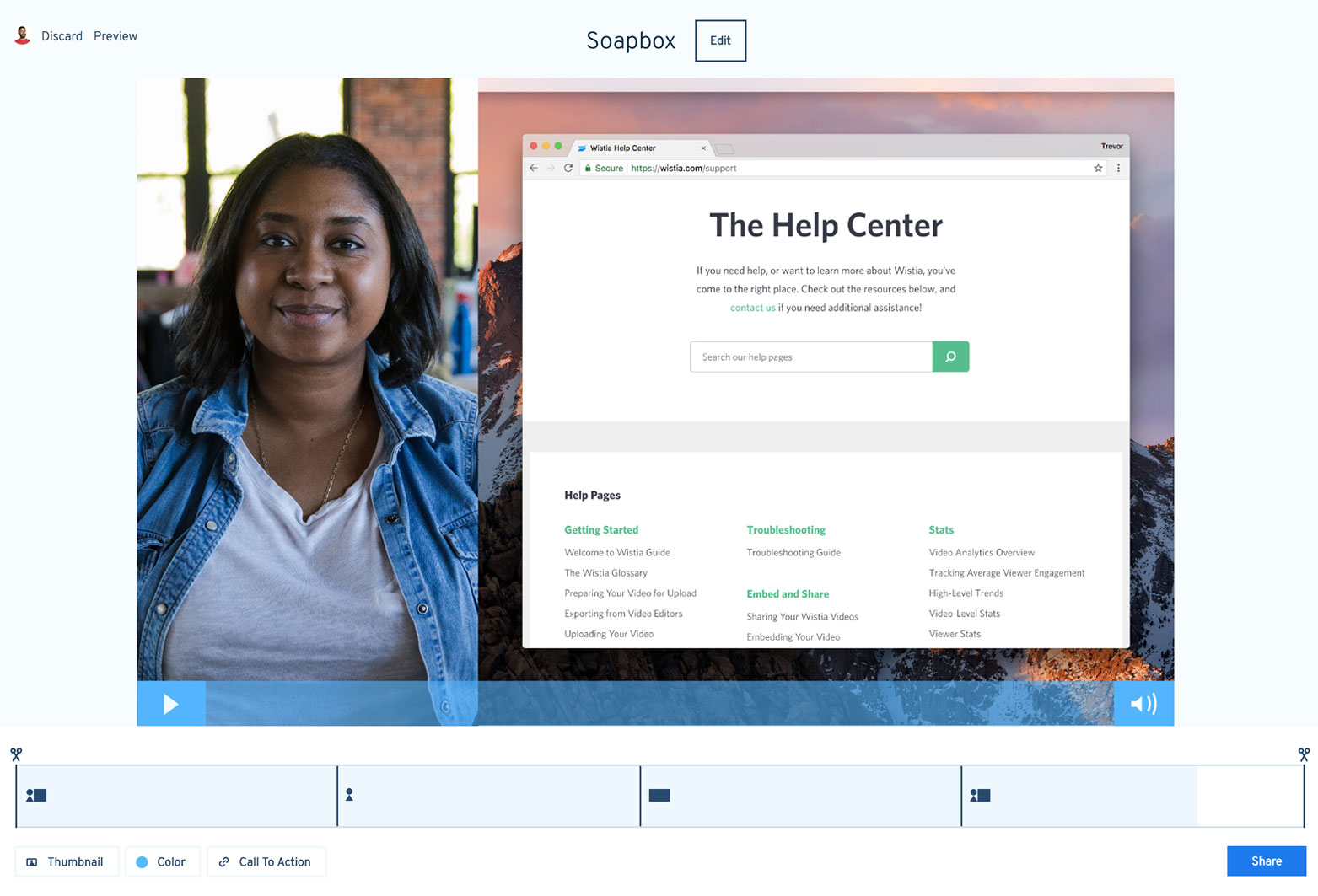“Thanks for calling Every Company’s Customer Service. This call could be recorded for quality assurance. Para servicio en español, diga español.”
Humans are smart. First, we replaced horses with cars. Now, we’ve become so advanced as a species that we’ve eliminated the need for human interactions.
Or have we?
As it turns out, the best customer service is provided by humans after all. Although robots can be efficient, only humans can create a great emotional experience. A McKinsey study on automation discovered that activities involving complex social interactions, like communicating with customers, had a less than 30% chance of automation because humans have a much higher level of emotional intelligence than machines.
These satisfying emotional experiences are the key to customer loyalty. Brands that reward customers with personalized support are able to retain customers to the point where they become willing marketers for their company.
Here are three ways to add a personal touch to customer support.
Treat Every Customer as an Individual
Good customer service is simple problem solving. A good customer experience, on the other hand, goes above and beyond by providing the customer with a sense of surprise and value which can turn them into enthusiastic brand ambassadors.
When a customer’s son left behind a stuffed giraffe, Joshie, at a Ritz-Carlton hotel, the staff found the toy and took several photos to create a story about Joshie enjoying his vacation. Subsequently, the customer shared his story on the Huffington Post, which went viral. The full effects of that story were detailed 4 years later when the staff at another Ritz-Carlton hotel also went above and beyond to find the giraffe that went missing a second time:
Joshie’s story resonated with fans of great customer service around the world, and the article earned more than 12,000 Facebook likes, 4,600 plus tweets and more than 3,500 Facebook shares among other social media attention. I have heard from people, who have wanted to share this loving story, from Australia, Germany, Japan, Canada and even a BBC travel show in the United Kingdom. Joshie’s tale also has been memorialized in at least three books and recounted by many others in keynote speeches. Source

An efficient customer service department would have simply returned the stuffed animal with expedient shipping, satisfying the customer for the moment. But by simply taking a few photos to create a personal experience for the customer, Ritz-Carlton reached media outlets in several different countries and won favorable impressions from millions of potential customers.
According to research by customer strategy firm thinkJar, 72% of satisfied customers spread the word to 6 or more people. Conversely, it also showed that 66% of customers who switched brands did so as a direct result of poor customer service.
While brand loyalty has always been important and word-of-mouth existed since the dawn of time, never before have consumers been equipped with platforms that can advertise to the world at large in the same way that brands do. If satisfied customers could tell their circle of friends about a certain company before, now they can broadcast their praise to millions of people through social media, blogs and videos.
Instead of providing the same script or procedure for all customers, take a moment to put yourself in their shoes. Think about how to make their day by giving them the best service that will knock their socks off.
Use Video Support to Create a Great Customer Experience
Video is a powerful way to show a customer how to solve a problem, not just tell them. Using video to guide a customer through individual steps can get rid of those awkward pauses after providing instruction over the phone. Plus, humans are way better at processing visual information. A study by the Social Science Research Network found that 65% of us are visual learners.
In his book Silent Messages, non-verbal communications expert Albert Mehrabian outlines the following equation:
Total feeling = 7% verbal feeling + 38% vocal feeling + 55% facial feeling.
Since facial signals dictate most of human emotions, video is a highly effective tool to add that personal touch to your customer service strategy to create a satisfying customer experience.
Tools like Wistia’s Soapbox allow anyone, regardless of technical skill level, to create highly personal support videos. Their unique dual-stream feature lets support reps record their screen and webcam simultaneously, so their video is both human and helpful. Short of standing in front of the customer’s computer for help, video support like this is the most personal way to reach a customer, ensuring a highly personalized customer experience. It offers plenty of human connection while providing essential information in a way that the customer can easily process.
Make a Personal Connection with Customers through Soft Skills
There’s a reason why bad customer service provokes outrage among customers and potential customers alike. The lack of emotional connection with a customer can lead to bad decisions that result in PR disasters, whether it’s poor treatment of a passenger on a plane, or an insensitive ad that misses its target demographic.
Due to cognitive bias, human memory is shaped more by emotions than facts, which means that customers are more likely to recall poor or exceptional support rather than an average performance, which will quickly be forgotten. It also means that even if a customer got the support they need, a negative feeling created by an unfriendly voice or dry language could lead them to remember the experience as bad.
Over time, the benefits of having emotionally connected customers are twice as valuable as having merely satisfied customers by driving more repeated sales, word-of-mouth marketing and a willingness to pay more. So rather than focusing on speed at the cost of emotion for instance, training for maximum emotional connection is a better service strategy.
To do this, you’ll need to practice the soft skills that lead to a more personalized response. Imagine that every customer you interact with is a valued friend. When a close friend is in trouble, you help them because you genuinely care.
Learning to treat the customer as a friend will improve the personal connection by making your voice friendlier, your writing more social and your interactions more natural by listening for communication cues.
Channels like live chat help you connect with customers in real time where there’s an immediacy in the support interaction that helps support agents feel out customers and use their soft skills to help customers best. Tools like UJET make it easy to drop live chat widgets into your app that make it easy for customers to connect with agents.
For further reading, this customer service guide from Zendesk offers simple techniques for developing soft skills that will help you connect with customers on a more personal level.
A New Era of Customer Service
Thanks to technology, we live in an age where a service with a smile is no longer enough. The emergence of social media has changed the consumer landscape, creating customers that are increasingly valuing quality over quantity. It’s easier than ever before for companies to become known throughout the world for both good and bad customer service.
Consequently, it’s crucial to invest in quality customer service and train employees with the necessary soft skills and tools to win over customers. Providing that personal touch and making an emotional connection will go a long way in placing your company above the competition.





The relationship built can make or break any transactions. Good reminders and hopefully more people in Customer Service remember who they are serving and why they are in that job.
Let’s face it–the #Joshie story is one of a kind. You’d have to have a genius person working for you to think of that. Hell, *I* wouldn’t think of that! 🙂 #GREAT CSR.